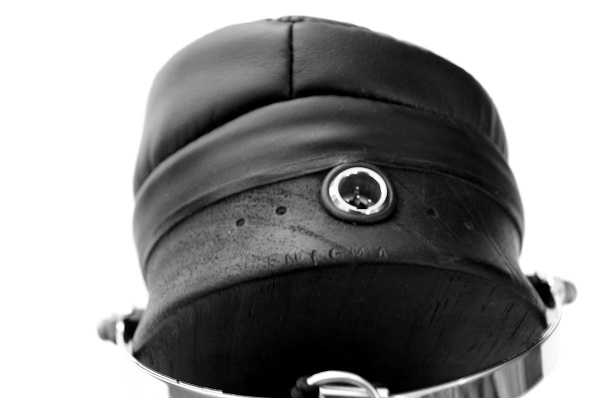Tonality
The Enigma uses a planar driver that Luis says is custom-made. I’m not sure who makes the driver, but the Enigma was about as hard to drive as my various T50RP mods lying around, so it’s rather sensitive, but definitely benefits with amping.
My initial impression of the Enigma’s sound was a little less than favorable. I was going through revisions of the ZMF x Vibro, and I thought the Enigma definitely sounded a league above any T50RP mod I’ve tried (I don’t really have many other references for high end closed headphones other than the T5p which I really disliked and the TH900 which I only briefly tried and don’t feel comfortable referencing in this review) but sounded a little too thick. As I adjusted to the sound, they sounded much more palatable.
The Enigma was always created to be more of a “fun” sounding headphone than an analytical headphone, which is something I appreciate. The quest for neutrality has been attempted by many, but because of how different people’s perception of sound is, there will never be a “true” neutral. Countless reviews of the top-tier headphones can attest to that. Luis goes another way with his most expensive creation. In choosing to create a headphone that strives for musical enjoyment rather than complete neutrality, he just might be selling the most enjoyable headphones on the market.
Bass
The Enigma’s sound can best be described slightly bass boosted. But unlike the Perfect Sound Dido that I reviewed a while back, the Enigma’s bass boost is much more tasteful. It’s one of the few closed headphones I’ve heard that can authoritatively produce enough sub bass to actually make my ears vibrate during songs that call for it. But Luis wouldn’t just tune the headphones to produce lots of bass; it has some of the best timbre I’ve ever heard in a closed back headphone—even better than most open back headphones. String bass is an absolute joy to listen to with the Enigmas as they resolve more than enough detail to really feel the players bow and actually hear his or her fingers sliding up and down the instrument. That combined with the fact that the Enigma fleshes out the bass exactly the amount I want it to leads to, in my opinion, an experience I’ve yet to see be topped.
Midrange
The midrange is usually the star of any T50RP mod. The Enigma is a bit different in that the bass steals the show, but the midrange is definitely no slouch. The extra bass allows for a warm, thick (but not too thick) midrange. It’s not so thick that it’s slow of course, but enough to give Audio Technica’s wooden headphones a run for their money (Actually, compared to the W3000ANV I heard a while back, the Enigma has a much more satisfying midrange). I’d struggle to call it south of neutral because headphones that have south-of-neutral midrange tend to leave me a bit cold (sorry for the pun). I feel that the warmness of the Enigma’s sound signature lends to a midrange that is just better integrated with the sound as a whole compared to most midrange-heavy headphones.
Treble
Treble is about what I expect for a warm headphone. There is a gradual descent the higher up the Enigmas try to go, but it’s not steep drop off like the Oppo PM1 with its original pads. Despite the fact that the treble isn’t exactly prominent, they are able to convey as much, if not more detail than any T50RP mod I’ve ever heard, including the Alpha Dogs. It doesn’t jump out like the Sony SA5000 attempts to do, but organically allows the user to pick out the details should he or she please.
Soundstage
Soundstage is surprisingly capable for a closed headphone. It’s not as big as the AKG K550’s soundstage, but I never felt it sounded closed in. Positioning was also decent for a large-sounding headphone. Overall, I wouldn’t say soundstage is one of the Enigma’s weaknesses.
But, I would say comfort is one of the Enigma’s weaknesses. I know I touched on it before, but I want to bring up something strange I noticed while testing the Enigma. After a period of slight discomfort due to the Enigma’s clamp, I slowly took off the headphones. When they were just far enough from my ears to break any seal the pads made, I noticed something strange. They still sounded good, possibly better, with the pads slightly unsealed. They lost most of their warmness and instead sounded much airier and, well, neutral. It would be great if Luis somehow created a pad system to allow for the user to switch between sounds, because apparently the Enigma does just fine without a serious seal, but I’m not sure how feasible that would be.
Final Thoughts
While most companies have tried to do the impossible in creating a state of the art headphone that, in their eyes, are neutral, Luis does something much more admirable. He hand-makes a headphone using woodworking skills passed down his family, he tunes it in a way that few would object, for it has very few faults, and he didn’t try to shove an expensive cable to the buyers, instead electing to sell the headphones for as cheap as he can. What Luis has created is definitely off the beaten path. While the Sennheiser HD800 tries to be a glass of water, the Enigma is the comfort food that never fails to satisfy. And it never does.
Price: $900
Links
http://www.head-fi.org/t/706262/lffs-enigma-new-from-the-maker-of-the-paradox





